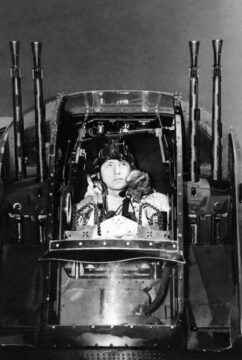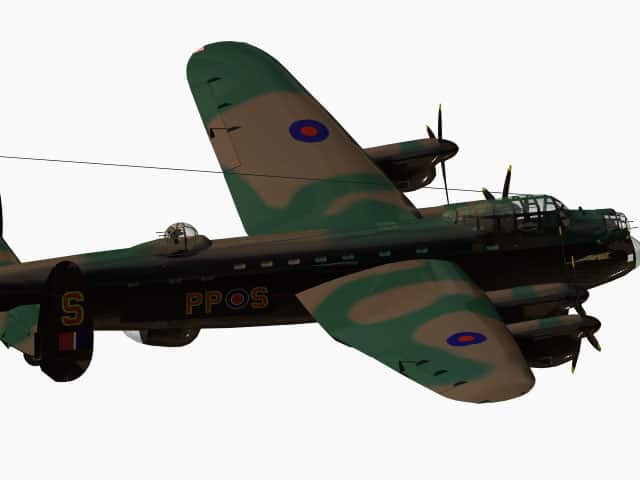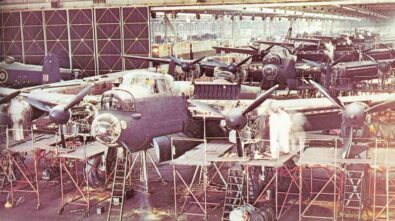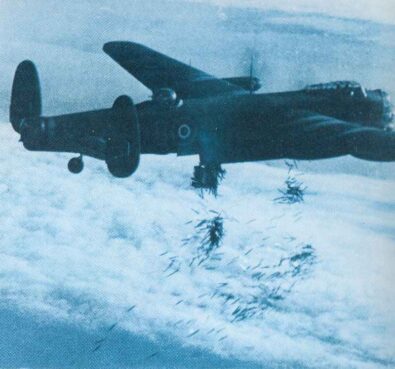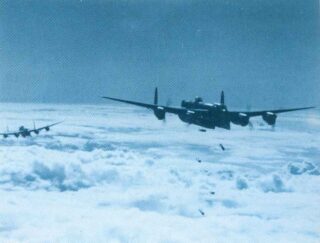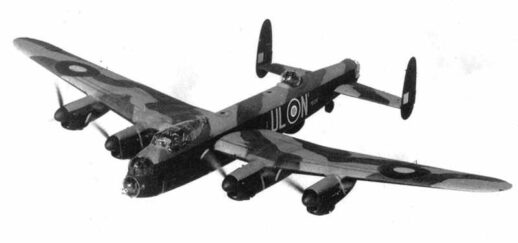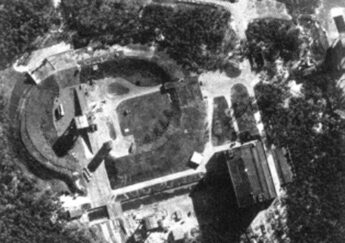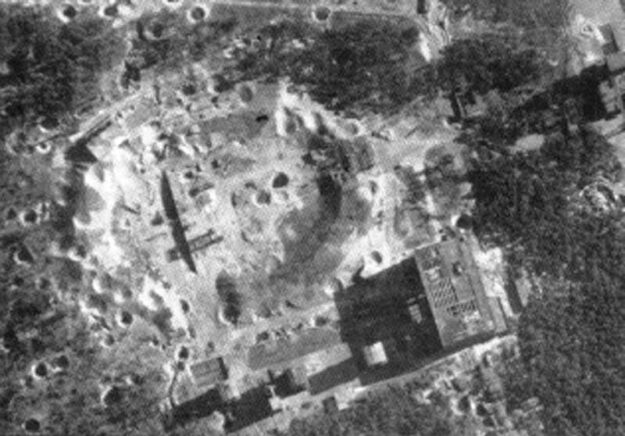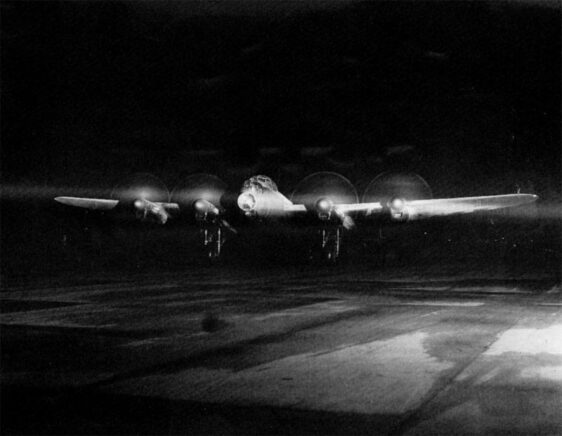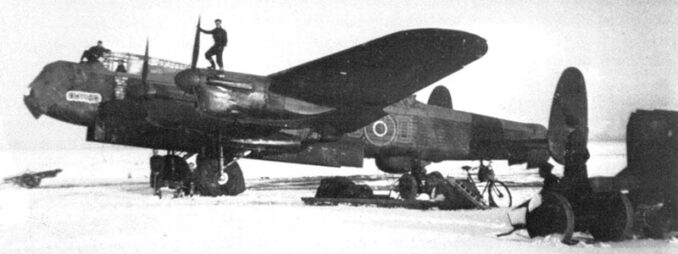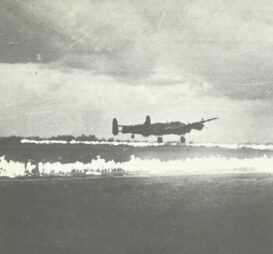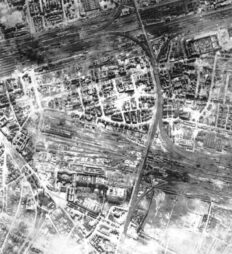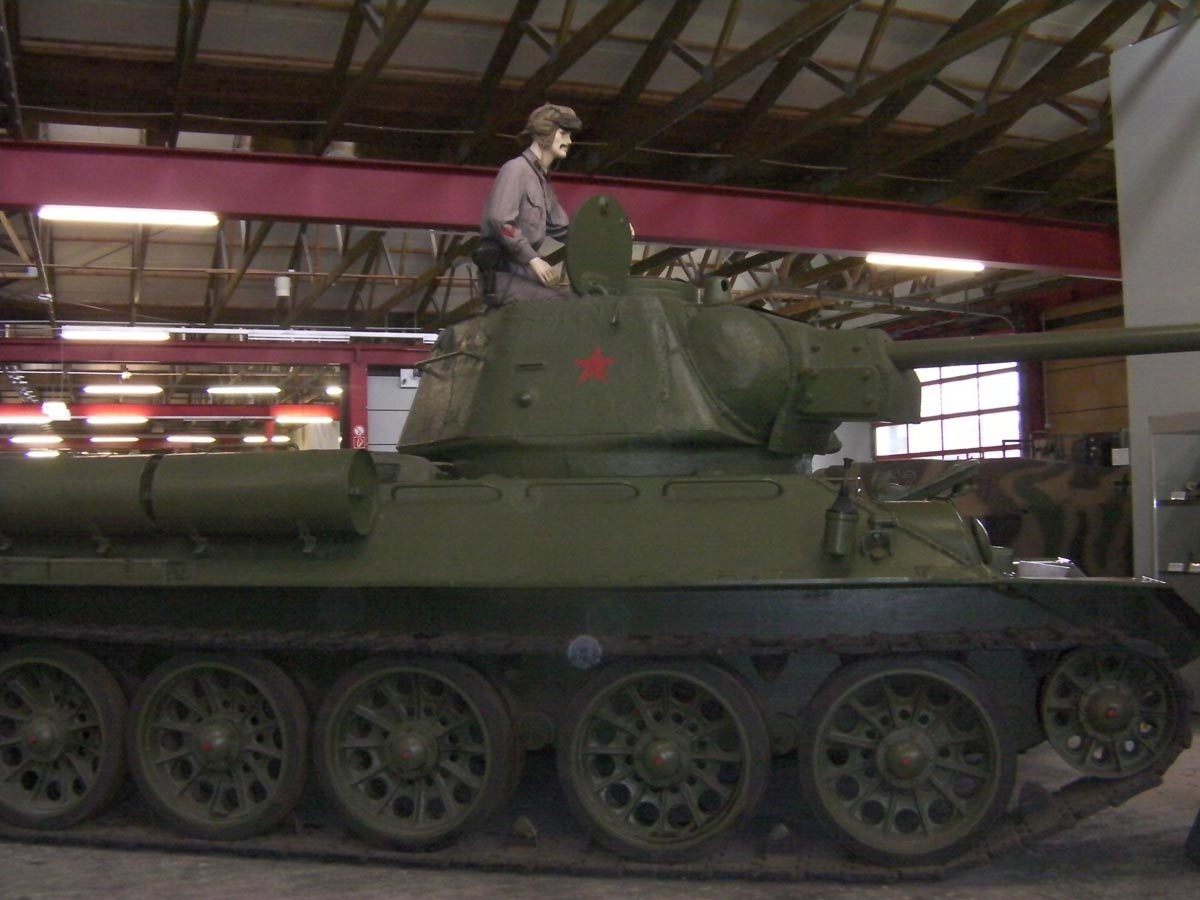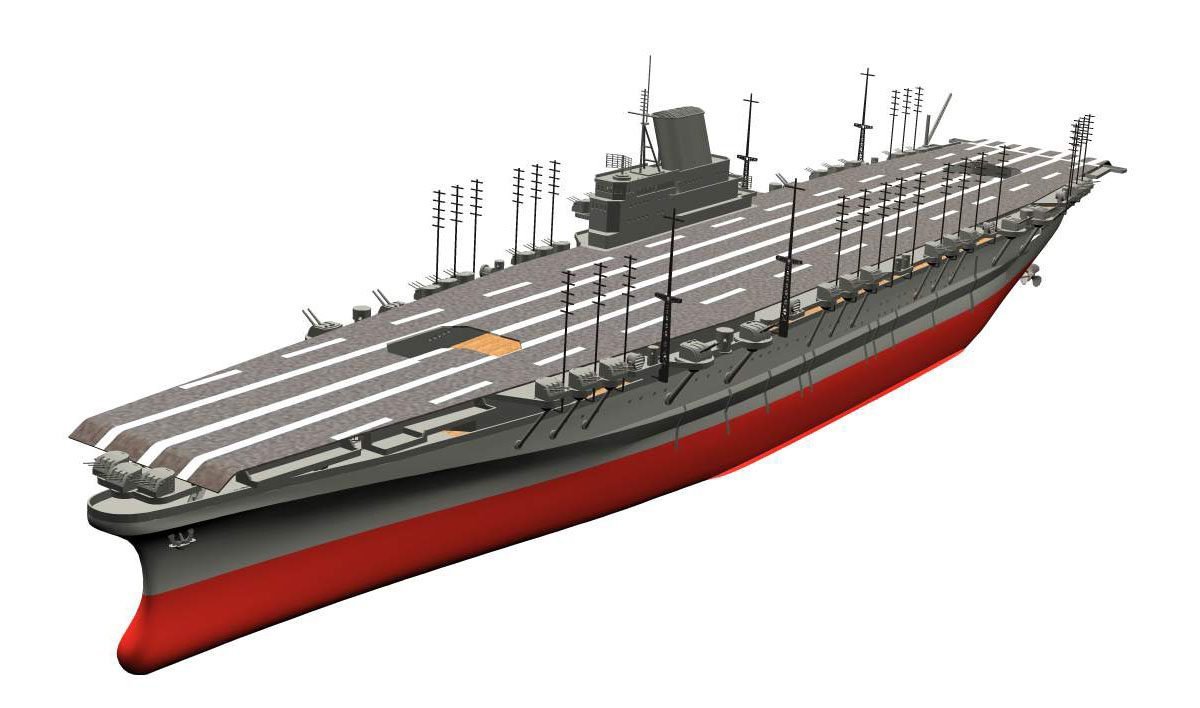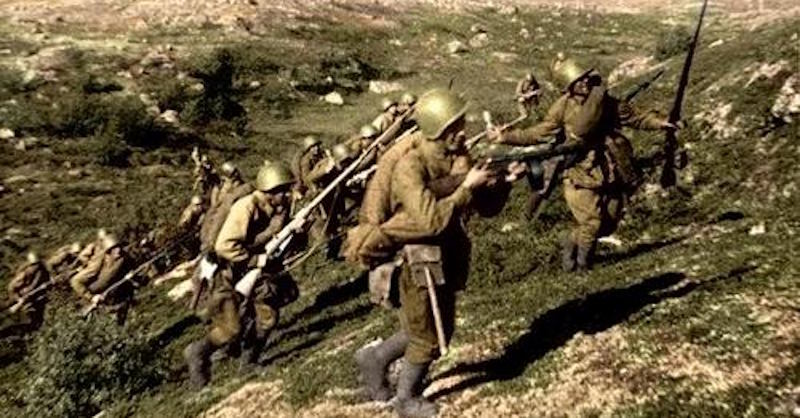Heavy strategic night bomber Avro Lancaster of the Royal Air Force.
History, development, service, specifications, pictures and 3D model.
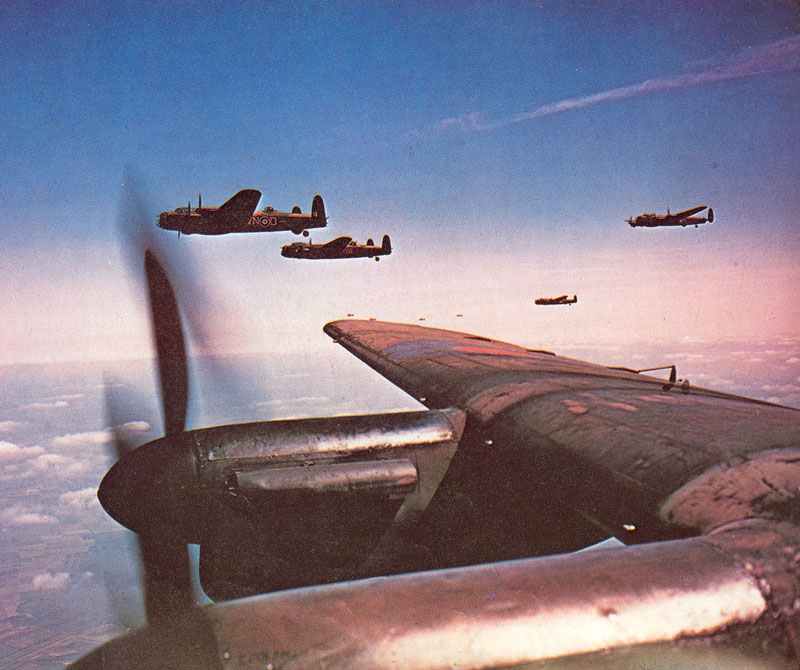
Avro Lancaster bomber.
Table of Contents
Avro Lancaster
Type: British heavy bomber.
The Avro Lancaster is a British four-engine heavy bomber aircraft used by the Royal Air Force (RAF) during the Second World War. It is one of the most famous and successful bombers of the war, known for its impressive bombing capability and its role in the strategic bombing raids on Germany.
Overview
1. it was developed by Avro in the late 1930s as an improvement on the earlier Manchester bomber.
2. powered by four Rolls-Royce Merlin engines, which enabled it to carry a heavy bomb load over long distances.
3. the Lancaster had a top speed of 280 mph (454 km/h) and a range of 2,500 miles (4,073 km).
4. it could carry up to 22,000 pounds (10,000 kg) of bombs, including the 5,400 kg ‘Tallboy’ and the 10,000 kg ‘Grand Slam’ bombs.
6. used in famous raids such as the ‘Dambusters’ attack on German dams and the sinking of the German battleship Tirpitz.
7. a total of 7,377 Lancasters were built, more than any other British bomber during the war.
The Avro Lancaster played a crucial role in the Allied victory in the Second World War and remains a symbol of British aviation history.
The Avro Lancaster, undoubtedly one of the most significant bombers of World War II and one of the outstanding military aircraft in aviation history, owes its development to the problems faced by its predecessor, the Avro Manchester.
Whatever one’s view of the British post-offensive on German cities, the ostensible aim of which was to weaken the German arms industry, the Lancaster’s 10 Victoria Cross awards were the highest number of military decorations awarded to any aircraft type in their country (a total of 32 Victoria Crosses were awarded to aircrew or pilots during the Second World War).
History:
Unquestionably one of the leading significance aircraft of WW2, as well as one of the finest planes of aviation history, the Avro Lancaster came to exist as a result of the fiasco of its forerunner.
In September 1936 the Air Staff released requirements P13/36 for a twin-engined bomber of outstanding dimensions as well as capability to be run by a pair of the very strong power plants at this time under construction: the Rolls-Royce Vulture 24-cylinder X power plant had been favored.
Handley Page swapped to 4 Merlin engines for the Halifax bomber, nevertheless Avro followed the big-twin blueprint and the initial Type 679 Avro Manchester flew on July 25, 1939. Totally 209 Manchesters were produced by November 1941, however the aircraft had been suffering from the unreliability and inadequate performance of the power plants. Although it was supplied to 8 Bomber Command squadrons, as well as elements of 2 others along with a flight in Coastal Command, the Manchester had been removed from operation in June 1942 and survivors had been scrapped.
However, the general Manchester had been definitely remarkably great, and in 1940 the choice had been taken up to develop a longer-span model with 4 Merlin power plants.
The initial Lancaster (BT 308) flew as the Manchester III at the start of 1941. So excellent was its capabilities that it entered instant large-scale manufacturing, and Manchesters currently on the line from L7527 onwards had been finished as Lancasters (recognized from afterwards planes by their row of rectangular windows inside rear fuselage).
Operations started at the beginning of 1942 by 44 Sqn at Waddington, and on 17 April 1942 a combined force of 44 and 97 Squadrons launched a somewhat foolhardy daylight raid against the MAN plant at Augsburg, whereupon the fresh bomber’s presence had been discovered.
From this day until the end of WW2 Lancasters fly 156,000 sorties in Europe as well as dropped 608,612 long tons of bombs.
Overall manufacturing, together with 430 built in Canada by Victory Aircraft, had been 7,377 Lancasters. Of these 3.425 had been Mk I and 3,039 the Mk III using US Packard-built power plants.
Users: RAF (British, Canadian and Polish squadrons), Canada, New Zealand (for all variants)

3D Model Avro Lancaster Bomber Mk I
Specifications for Avro 683 Lancaster Mk I and Mk II
Specifications:
Specification | Mk I | Mk II |
|---|---|---|
Type | heavy strategic night bomber | |
Power plant | four Rolls-Royce Merlin 20 engines, each with 1,460 hp | four Bristol Hercules VI 14-cylinder two-row, sleeve-valve radials engines, each with 1,650 hp |
Accommodation | 7 | 8 |
Wing span | 102 ft 0 in (31.10 m) | |
Length overall | 64 ft 9 in (21.10 m) | |
Height overall | 19 ft 7 in (5.97 m) | |
Weight empty | 36,900 lb (16.705 kg) | |
Weight loaded | 68,000 lb (30.800 kg) | |
Maximum speed | 287 mph at 11,500 ft | |
Cruising speed | 210 mph at 11,500 ft(462 km/hr at 3,500 m) | |
Climb time | 41 minutes (with maximum weight) to 20,000 ft (6,095 m) | |
Service ceiling | 24,500 ft (7,467 m) | |
Range | 1,660 miles with 14,000 lb bombs (2,675 km with 6,350 kg bombs); maximum 2,685 miles (4,320 km) |
Armament:
Specification | Mk I | Mk II |
|---|---|---|
Power turrets | 2 with each 2 x 0.303in Browning (nose, mid-upper) | 3 with each 2 x 0.303in Browning (nose, mid-upper, vertal) |
Tail turret | 1 with 4 x 0.303in Browning | |
MGs total | 8 | 10 |
Bomb load | bomb bay for normal load of 14,000 lb (6,350 kg) bombs | maximum bomb load of 22,000 lb (9,979 kg) bombs |
Service statistics:
Avro 683 Lancaster | figures |
|---|---|
First flight | 9 January 1941 |
Service delivery | September 1941 (Mk II not later than October 1942) |
First combat mission | 17 April 1942 |
Final delivery | 2 February 1946 |
Withdrawal from service | February 1954 |
Total production figure | Total: 7,366 (of these 300 Mk II, 3,425 Mk I and 3,039 Mk III) |
Price per unit | £ 40,000 = c.$ 190,000 |
Operations in WW2 | 156,192 (148,403 as bomber) |
Losses | 3,832 (40.76 ops per loss) |
Bomb tonnage on targets | 608,612 t (4.1 tons per bomber op) |
Bomber Commands Order of Battle, April 1945
By April 1945, Bomber Command’s frontline strength was almost entirely dominated by the Avro Lancaster, with three groups fully equipped and another converting.
Bomber Command Order of Battle April 1945:
Group | Base | Squadron | Type |
|---|---|---|---|
No 1 Group (HQ Bawtry) | Binbrook | No 460 Sqn | Lancaster |
Elsham Wolds | No 100 Sqn | Lancaster |
|
Elsham Wolds | No 103 Sqn | Lancaster |
|
Elsham Wolds | No 576 Sqn | Lancaster |
|
Faldingworth | No 300 Sqn | Lancaster |
|
Hemswell | No 170 Sqn | Lancaster |
|
Kelstern | No 625 Sqn | Lancaster |
|
Kirmington | No 166 Sqn | Lancaster |
|
Ludford Magna | No 101 Sqn | Lancaster |
|
North Killingholme | No 550 Sqn | Lancaster |
|
Scampton | No 153 Sqn | Lancaster |
|
Wickenby | No 12 Sqn | Lancaster |
|
Wickenby | No 626 Sqn | Lancaster |
|
No 2 Group (HQ Huntingdon | (transferred to 2nd Allied Tactical Air Force) | ||
No 3 Group (HQ Exning) | Chedburgh | No 218 Sqn | Lancaster |
East Wretham | No 115 Sqn | Lancaster |
|
Mepal | No 75 (NZ) Sqn | Lancaster |
|
Methwold | No 149 Sqn | Lancaster |
|
Midenhall | No XV Sqn | Lancaster |
|
Middenhall | No 622 Sqn | Lancaster |
|
Stradishall | No 186 Sqn | Lancaster |
|
Tuddenham | No 90 Sqn | Lancaster |
|
Tuddenham | No 138 Sqn | Lancaster |
|
Waterbeach | No 514 Sqn | Lancaster |
|
Witchford | No 115 Sqn | Lancaster |
|
Wratting Common | No 195 Sqn | Lancaster |
|
No 4 Group (HQ York) | (total 11 squadrons) | still fully Halifax equipped |
|
No 5 Group (HQ Grantham) | Balderton | No 277 Sqn | Lancaster |
Bardney | No IX Sqn | Lancaster |
|
Coningsby | No 83 Sqn | Lancaster |
|
Coningsby | No 97 Sqn | Lancaster |
|
East Kirkby | No 57 Sqn | Lancaster |
|
East Kirkby | No 630 Sqn | Lancaster |
|
Fulbeck | No 189 Sqn | Lancaster |
|
Metheringham | No 106 Sqn | Lancaster |
|
Scampton | No 57 Sqn | Lancaster |
|
Skellingthorpe | No 50 Sqn | Lancaster |
|
Skellingthorpe | No 61 Sqn | Lancaster |
|
Spilsby | No 44 Sqn | Lancaster |
|
Spilsby | No 207 Sqn | Lancaster |
|
Syerston | No 49 Sqn | Lancaster |
|
Waddington | No 463 Sqn | Lancaster |
|
Waddington | No 467 Sqn | Lancaster |
|
Woodhall Spa | No 617 Sqn | Lancaster |
|
No 6 (RCAF) Group (HQ Alierton Park, Knaresborough) | Croft | No 431 Sqn | Lancaster |
Croft | No 434 Sqn | Lancaster |
|
East Moor | No 432 Sqn | Halifax |
|
Leeming | No 427 Sqn | Lancaster |
|
Leeming | No 429 Sqn | Lancaster |
|
Linton-on-Ouse | No 408 Sqn | Lancaster |
|
Linton-on-Ouse | No 426 Sqn | Halifax |
|
Middleton St George | No 419 Sqn | Lancaster |
|
Middleton St George | No 428 Sqn | Lancaster |
|
Skipton-on-Swale | No 424 Sqn | Lancaster |
|
Skipton-on-Swale | No 433 Sqn | Lancaster |
|
Tholthorpe | No 420 Sqn | (converting to Lancaster) |
|
Tholthorpe | No 425 Sqn | (converting to Lancaster) |
|
No 8 (Pathfinder) Group (HQ Eyton) | (partially equipped with DH Mosquitos) |
||
Downham Market | No 635 Sqn | Lancaster |
|
Gransden Lodge | No 405 Sqn | Lancaster |
|
Graveley | No 35 Sqn | Lancaster |
|
Little Staughton | No 582 Sqn | Lancaster |
|
Oakington | No 7 Sqn | Lancaster |
|
Upwood | No 156 Sqn | Lancaster |

References and literature
The Encyclopedia of Weapons of World War II (Chris Bishop)
Combat Aircraft of World War II (Bill Gunston)
Technik und Einsatz der Kampfflugzeuge vom 1. Weltkrieg bis heute (Ian Parsons)
Das große Buch der Luftkämpfe (Ian Parsons)
Luftkrieg (Piekalkiewicz)
Flugzeuge des 2. Weltkrieges (Andrew Kershaw)
The Squadrons of the Royal Air Force (James J. Halley)
Bomber Command Handbook 1939-1945 (Jonathan Falconer)
Lancaster Squadrons 1942-43 & 1944-45 (Jon Lake)


